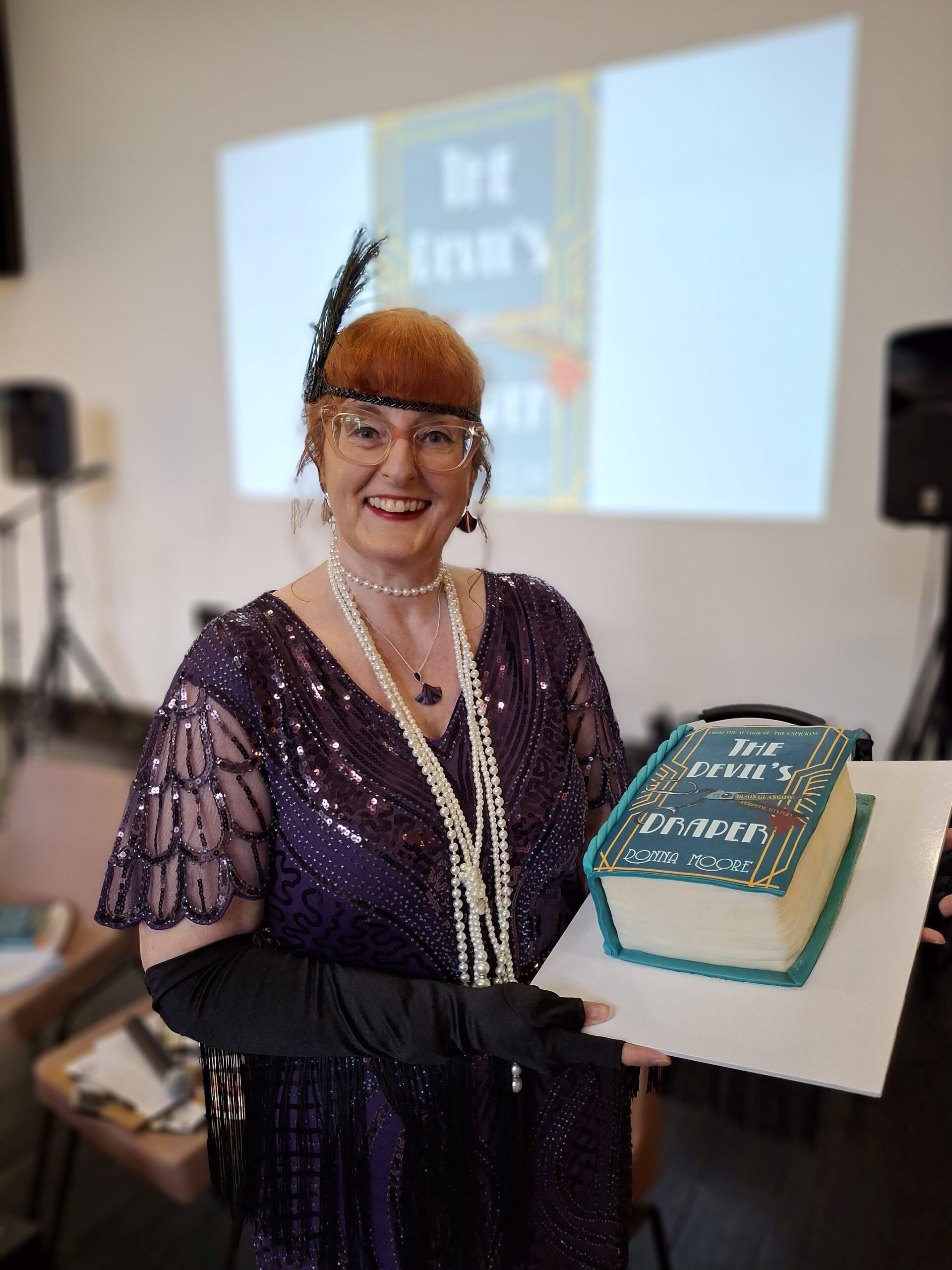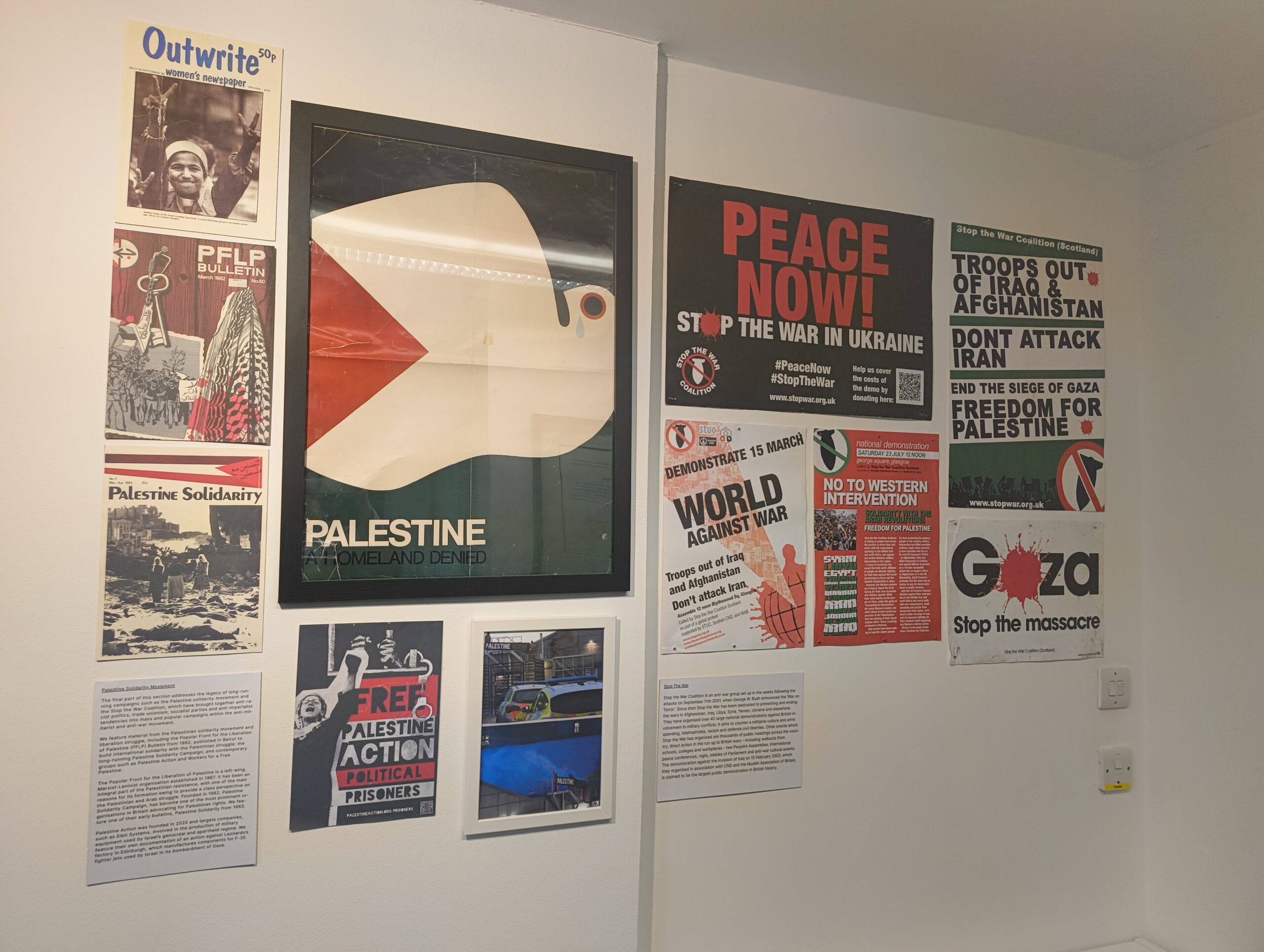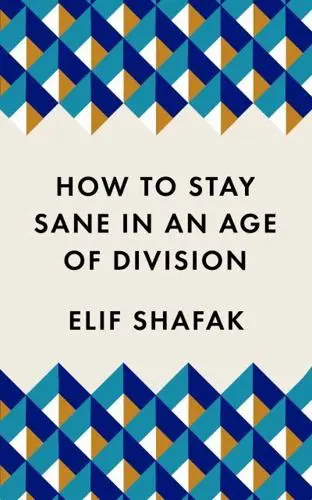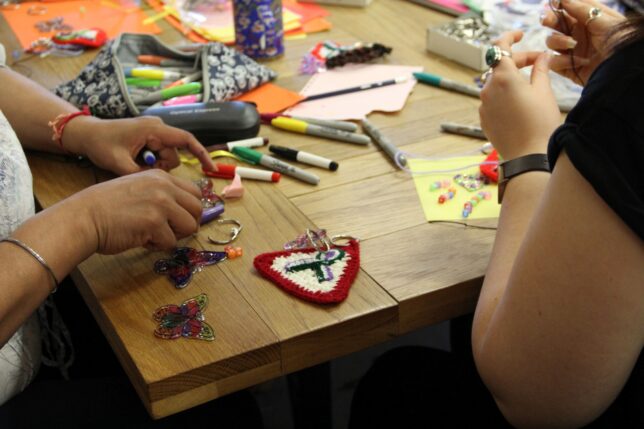Whilst we have seen how the establishment of the library benefited the women of industrialising Bridgeton, how did the library modernise? In this blog post, we explore how in the face of changing economic circumstances, the library served the changing needs of Bridgeton’s population.
Relative to the upheaval and influence of industrialisation in Glasgow were the changes to the economic structure and thus, employment and socialisation, experienced by the city in the post-industrial period (c. 1960 onwards). De-industrialisation represented a shift from manufacturing as the major source of employment and income, to services then taking on this role. 1 In Glasgow, the number of people employed in manufacturing declined from 8.5 million in 1965, to 5.5 million in 1984. 2 As Bridgeton began to cross the boundary from industrial to post-industrial, this caused seismic changes to social and community structures as work and life was no longer based on heavy industry.
The industrial products which had once been manufactured in Bridgeton, and which contributed to its growth as the industrial heart of Glasgow, were now provided by overseas industry. 3 This change can be seen in the example of the Singer Sewing Factory, which once stood on the corner of Landressey Street and James Street. We introduce the Singer Factory and other aspects of the East End’s industrial past in our women’s heritage walk, which can be found here:
The Singer factory was built in the 1870s, and a workforce of around 30 was employed, assembling over 100 machines in its first month of operation. The production of these machines could not keep up with demand, with output rising to 1500 machines a week by 1876. 4 The Trade Journal ‘Engineering’, even commented that:
‘The Singer Factory at Bridgeton is now the largest sewing machine factory in the United Kingdom’.5
The business was so successful, that they relocated to a larger factory in Clydebank. However, the prosperity of Scottish industry and manufacture was not to last and would have a lasting impact on the work and leisure of its population. The factory closed in 1980 and many other traditional Scottish industries and manufacturing companies fell suit.
This was caused by British GDP, which, by the early 1960s, was growing at a significantly lower rate than other European countries, with Scotland doing particularly poorly because of its previous reliance on industry. Countries in the once powerful British Empire also began to seek independence and so, Britain lost many of its markets- they now had to compete in a more open market and fell short. As Glasgow was the industrial powerhouse of Scotland, and Bridgeton was the industrial powerhouse of Glasgow, it suffered badly from the loss of industry as a source of employment and revenue.

Figure 1- The Singer Sewing Factory, at 116 James Street, Bridgeton. Image Source- Secret Scotland Wiki, https://www.secretscotland.org.uk/index.php/Secrets/SingerFactoryBridgeton
As de-industrialisation occurred, unemployment and poverty were rife. To halt this decline Glasgow City Council, in 1957, chose Bridgeton as one of 29 comprehensive areas to be earmarked for re-development. 6 Part of this plan involved decentralisation, moving individuals away from overcrowded communities into new towns. Between 1951 and 1981, over 100,000 people left the East End of Glasgow, including over half of Bridgeton’s population. 7 This movement of people away from the once bustling centers, served to alleviate overcrowding and facilitated redevelopment. New buildings were erected, including those on Madras Street and Reid Street, which replaced many sections of old tenement properties, with new-style three story tenement blocks.
Whilst on the outside this looks like a massive improvement to the lives of those living in Bridgeton, these changes deeply shook the foundations of the social life of the town. The ending of traditional tenement life, which had been a tenet of the industrial town, meant that close communities no longer existed in the same way that they had before. This took a massive amount of adjustment and left an opening which needed to be filled.
Whilst this movement towards a post-industrial city brought mass unemployment and disrupted the life of those living within these areas, it also brought on a new set of social and economic circumstances, which brought heart back to the Public Library.
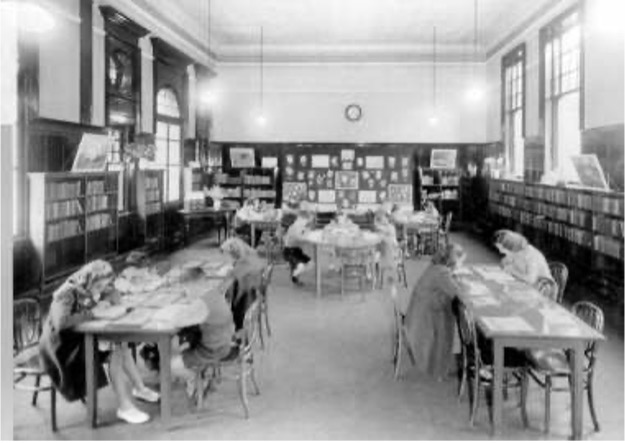
The movement from an industrial to service economy again awarded residents with more leisure time than ever before and meant that they needed entertainment during their free time. However, for many, insufficient wealth meant that people could not travel beyond Bridgeton, and their entertainment had to be home-made. And so, the library did what it has always done best- it created a heart of education and socialisation for the community.
As we move towards the modern period, the library created a safe space not only for education, but also as a communal space in which groups and individuals could socialise. The library in its modern form began to create a sense of communality and community which had been lost in the de-industrialisation of Bridgeton. This was done by adapting to a new model of public librarianship, to meet the needs of its modern usership. This meant that there was a movement away from the provision of working-class literacy and temperance, towards a more general readership that embraced the middle classes. 8 Because of the new social conditions of the post-industrial period, there was a changed emphasis on the services which the library should provide. This can especially be seen in the changing category of the ‘Child’ during this period. From the 1960s onwards, the child and more specifically the teenager was now recognised as its own distinct entity, and provision was being made for their entertainment and education. New collections were created to meet their needs, and they were recognised as their own readership base. A British survey in 1972 found that two-thirds of library users were now children. 9
One of the ways in which the library adapted to the needs of its modern population was by opening up its collections, to no longer be closed off in the way that we can see in this picture below:
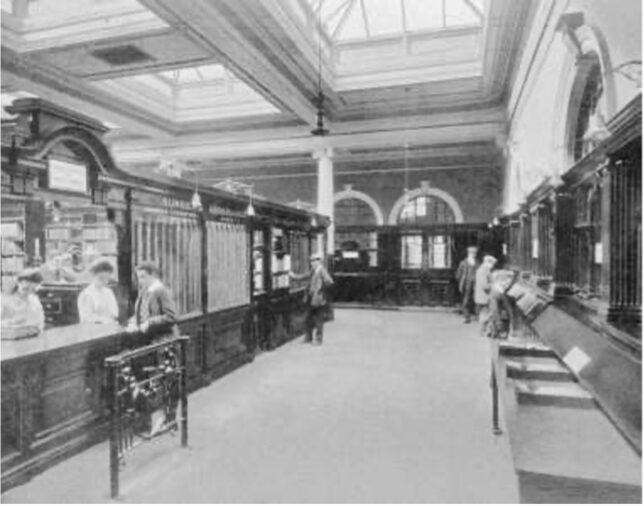
When the library first opened, visitors didn’t choose their own books off the shelves, and so would instead go to a reception desk to be served. Now, in the modern era, there was an emphasis on the openness and usability of the library space, based on innovative new library designs from Denmark and Sweden.
The library now served a multitude of functions- as a place of learning, a space for entertainment and for meetings. When the community needed a place to assemble, the library met this need and kept the bonds of community strong. By providing new facilities, such as an increased children’s library space and events space for group gatherings, the library maintained its importance within the community by matching their services to what the new demands of the community was.
But how, in our modern age of technology, has the library adapted to fit our needs? Is it still fit for purpose for the modern woman? In the next blog post, we will explore the beginning of the library’s life as the Glasgow Women’s Library, and how this has reinvigorated the building’s importance within the community once again. The next blog post can be found following this link- https://womenslibrary.org.uk/2021/09/18/gwl-the-library-for-the-modern-woman/
References
W.F. Lever, ‘De-industrialisation and The Reality of the Post-Industrial City’, Urban Studies vol 6 (1991), https://journals.sagepub.com/doi/abs/10.1080/00420989120081161.
Secret Scotland Wiki, ‘Singer Factory Bridgeton’ (2013), https://www.secretscotland.org.uk/index.php/Secrets/SingerFactoryBridgeton.
Simon Taylor, Matthew Whitfield and Susie Barson, ‘The English Public Library 1850-1939’, Historic England (2014), https://historicengland.org.uk/images-books/publications/iha-english-public-library-1850-1939/heag135-the-english-public-library-1850-1939-iha/.
1- W.F. Lever, ‘De-industrialisation and The Reality of the Post-Industrial City’, Urban Studies vol 6 (1991), https://journals.sagepub.com/doi/abs/10.1080/00420989120081161, page 1.
2- W.F. Lever, ‘De-industrialisation and The Reality of the Post-Industrial City’, Urban Studies vol 6 (1991), https://journals.sagepub.com/doi/abs/10.1080/00420989120081161, page 4.
3- W.F. Lever, ‘De-industrialisation and The Reality of the Post-Industrial City’, Urban Studies vol 6 (1991), https://journals.sagepub.com/doi/abs/10.1080/00420989120081161, page 6.
4- Secret Scotland Wiki, ‘Singer Factory Bridgeton’ (2013), https://www.secretscotland.org.uk/index.php/Secrets/SingerFactoryBridgeton.
5- Secret Scotland Wiki, ‘Singer Factory Bridgeton’ (2013), https://www.secretscotland.org.uk/index.php/Secrets/SingerFactoryBridgeton.
6- W.F. Lever, ‘De-industrialisation and The Reality of the Post-Industrial City’, Urban Studies vol 6 (1991), https://journals.sagepub.com/doi/abs/10.1080/00420989120081161, page 22.
7- W.F. Lever, ‘De-industrialisation and The Reality of the Post-Industrial City’, Urban Studies vol 6 (1991), https://journals.sagepub.com/doi/abs/10.1080/00420989120081161, page 4.
8- Simon Taylor, Matthew Whitfield and Susie Barson, ‘The English Public Library 1850-1939’, Historic England (2014), https://historicengland.org.uk/images-books/publications/iha-english-public-library-1850-1939/heag135-the-english-public-library-1850-1939-iha/, page 5.
9- Simon Taylor, Matthew Whitfield and Susie Barson, ‘The English Public Library 1850-1939’, Historic England (2014), https://historicengland.org.uk/images-books/publications/iha-english-public-library-1850-1939/heag135-the-english-public-library-1850-1939-iha/, page 15.

